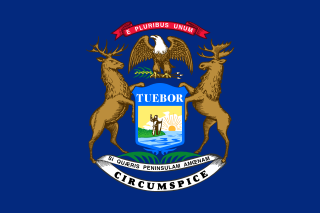| Date | Event |
|---|
| January 25-February 8, 1862 | Companies A, B, C, D, E, G and H organized at Malone, N.Y. and companies F, I and K organized at Lyons, N.Y. Organization completed at Albany, N.Y. |
| March 8, 1862 | Left State for Washington, D.C. under Colonel William Dutton, Lieutenant Colonel Charles Durkee and Major Albon Mann |
| March 28, 1862 | Moved to the Virginia Peninsula and attached to 3rd Brigade, 3rd Division, 4th Army Corps, Army of the Potomac |
| April 5-May 4, 1862 | Siege of Yorktown, Va. |
| April 29, 1862 | Reconnaissance toward Lee's Mills |
| May 5, 1862 | Battle of Williamsburg |
| May 21–23, 1862 | Operations about Bottom's Bridge |
| May 24–27, 1862 | Reconnaissance to Seven Pines |
| May 24, 1862 | Chickahominy, near Savage Station, and Seven Pines |
| May 31-June 1, 1862 | Battle of Seven Pines or Fair Oaks |
| The regiment lost 11 men killed, 3 officers and 31 men wounded, and 26 men missing. |
| June 1862 | Assigned to 2nd Brigade, 2nd Division, 4th Army Corps |
| June 25-July 1, 1862 | Seven days before Richmond |
| June 30, 1862 | White Oak Swamp |
| July 1, 1862 | Malvern Hill |
| July 1862 | At Harrison's Landing. Assigned to 1st Brigade, 2nd Division, 4th Army Corps. Colonel Dutton died of typhus fever. Lieutenant Colonel Durkee was promoted to colonel and took over the regiment. |
| August 16–23, 1862 | Moved to Fortress Monroe |
| September 18, 1862 | Duty at Yorktown |
| December 25, 1862 | Moved to Morehead City, N. C. and assigned to Naglee's Brigade, Dept. of North Carolina |
| January 1–21, 1863 | At Carolina City and assigned to 1st Brigade, 2nd Division, 18th Army Corps, Dept. of North Carolina |
| January 28–31, 1863 | Moved to Port Royal Harbor, S.C. |
| February 10-April 3, 1863 | At St. Helena Island, S.C., assigned to 1st Brigade, 1st Division, 18th Army Corps, Dept. of the South. Colonel Durkee resigned, and Lieutenant Colonel Frederick M. Wead was promoted to colonel and took command of the regiment. |
| April 3–11, 1863 | Expedition against Charleston, S.C. assigned to District of Beaufort, N. C., Dept. of North Carolina |
| April 12–15, 1863 | Moved to New Berne, N. C. |
| April 17–21, 1863 | Expedition to relief of Little Washington and duty in the District of Beaufort, N. C. |
| October 16–18, 1863 | Moved to Newport News, Va. attached to Newport News, Va., Dept. of Virginia and North Carolina |
| December 1863 | At Portsmouth, Va. |
| January 1864 | District of the Currituck, Dept. of Virginia and North Carolina |
| March–April 1864 | Veterans on furlough |
| March 1864 | Assigned to 1st Brigade, Heckman's Division, 18th Army Corps |
| April 26, 1864 | Moved to Yorktown, Va. and assigned to 1st Brigade, 1st Division, 18th Army Corps, Army of the James |
| May 3–28, 1864 | Butler's operations on south side of the James River and against Petersburg and Richmond |
| The regiment lost 1 officer and 21 men killed or mortally wounded, 3 officers and 57 men wounded, and 12 men missing. |
| May 5, 1864 | Occupation of City Point and Bermuda Hundred |
| May 8–10, 1864 | Swift Creek or Arrowfield Church |
| May 12–16, 1864 | Operations against Fort Darling |
| May 14–16, 1864 | Battle of Drewry's Bluff |
| May 16–28, 1864 | Bermuda Hundred |
| May 27–31, 1864 | Moved to White House, thence to Cold Harbor |
| June 1–12, 1864 | Battles about Cold Harbor |
| Colonel Wead, 1 other officer and 30 enlisted men were killed or mortally wounded, 2 officers and 77 men wounded, and 3 men missing. Lieutenant Colonel William Kreutzer was commissioned as colonel, but the regiment did not have sufficient manpower for him to muster in. |
| June 15–18, 1864 | Before Petersburg |
| The regiment lost 1 officer and 14 men killed or mortally wounded and 40 enlisted men wounded. |
| June 18, 1864 | Siege operations against Petersburg and Richmond begin |
| July 30, 1864 | Mine Explosion, Petersburg (Reserve) |
| August–September 1864 | Duty in the trenches before Petersburg and on the Bermuda Hundred front |
| September 28–30, 1864 | Battle of Chaffin's Farm, New Market Heights |
| The regiment lost 19 enlisted men killed or mortally wounded, 4 officers and 42 men wounded, and 1 man missing. |
| October 27–28, 1864 | Battle of Fair Oaks |
| The regiment lost 3 men wounded. |
| November 2–17, 1864 | Detached for duty in New York during Presidential election of 1864 |
| November 1864 | Duty in trenches north of James and before Richmond |
| December 1864 | Assigned to 1st Brigade, 3rd Division, 24th Army Corps |
| April 1865 | Assigned to 2nd Brigade, 3rd Division, 24th Army Corps |
| April 3, 1865 | Occupation of Richmond and Provost duty in Richmond and in the Dept. of Virginia |
| July 1865 | Assigned to 2nd Independent Brigade, 24th Army Corps |
| August 31, 1865 | Mustered out at Richmond, Va. under Colonel Frederick F. Wead, Lieutenant Colonel William Kreutzer and Major William H. Rogers |








